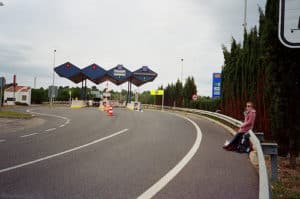Table of Contents
Megève, France: A Winter Wonderland
Deep in the French Alps, up winding roads, across freezing surging streams and through pine trees is the town of Megève. In the Haute-Savoie département wedged between modern-day France, Switzerland, and Italy, and at nearly 4,000 feet up, Megève was for centuries overlooked by the history books. Cows and mountain goats shared the alpine pastures, and were doing so well into the twentieth century. A scene straight out of The Sound of Music.
Enter the Roaring Twenties, when the whole of Europe was, as in America, seeking to shake off the memories of the Great War. These were times of fun and partying. Along with increasing wages and adoption of labor laws came the brand new idea of holiday travel. And the richest and noblest were not to be left out of the new era. Thus, the famed Rothschild banking family was to upend Megève’s peaceful peasant lifestyle forever. In 1921, Noémie de Rothschild, with her husband Baron Maurice, decide to make Megève the French competitor to Saint-Moritz, Switzerland — too Germanic for their taste. Up sprang luxury hotels, restaurants, fur shops, and now, art galleries and spas.
Skiing, More than a Pastime
The last hundred years of Megève’s history have been shaped by two parallel planks and recorded fireside in toasty chalets. Skiing is to Megève as steak is to frites. France’s first gondola built solely for whisking tourists to mountaintops so they could glide down was inaugurated here in 1933. Megève’s favorite son, Emile Allais, known as the father of modern skiing, dominated the sport through the ’30s. Audrey Hepburn and Cary Grant took to the slopes in Charade. And ever since, people from around the world have come to test their skills.
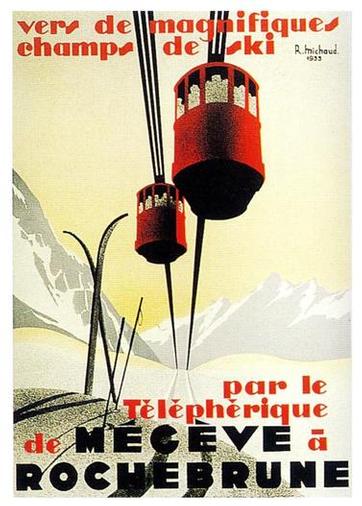
Skiing in Megève Today
Winter means skiing in Megève. After all, French schoolchildren have a two-week vacation in the middle of February dedicated solely to the sport. The town is proudly part of the évasion-Mont-Blanc ski domain, one of the largest in the world with over 450 kilometers of marked runs, linking half a dozen villages. The town also regularly hosts the European Moguls Cup, as well as a myriad of other wintry events (think snow golfing, ice polo, and hockey).
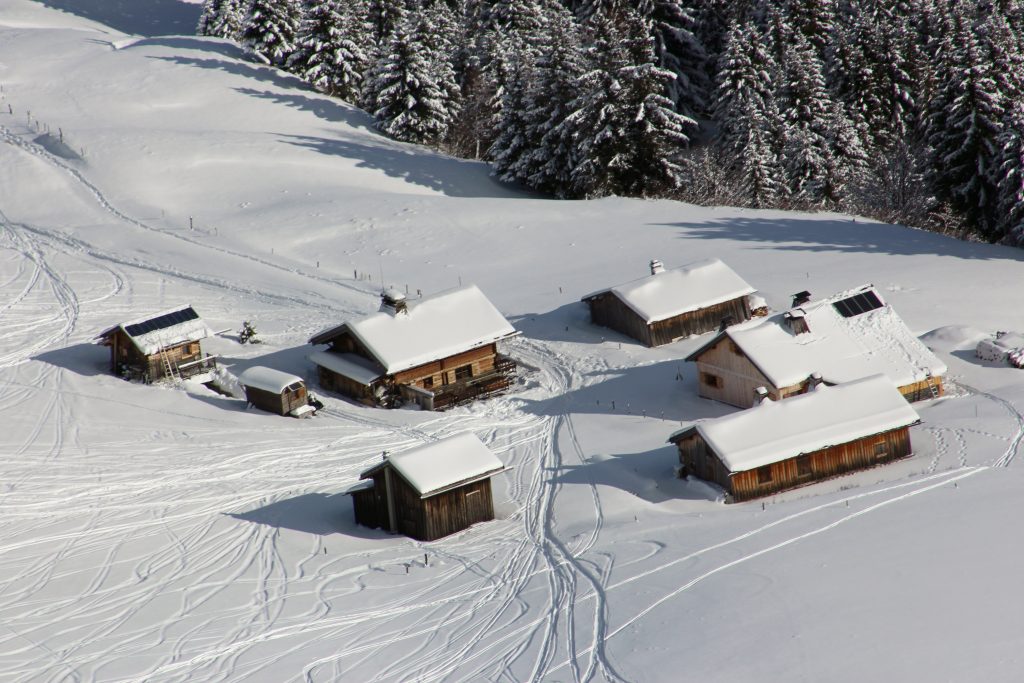
Unlike many other famous French ski towns, like Val d’Isère or Tignes, skiing in Megève is quite welcoming to families and beginners. Though any pro will find enjoyment, too. A free city-center-bound bus is never far from the bottom of the slopes, restaurants are plenty, and the overall low altitude and wide runs means that the whole family can enjoy. And classes are aplenty. The highly capable French Ski School (école du ski français) offers group and private classes for all ages and abilities throughout the season, which typically runs from mid-December through early April.
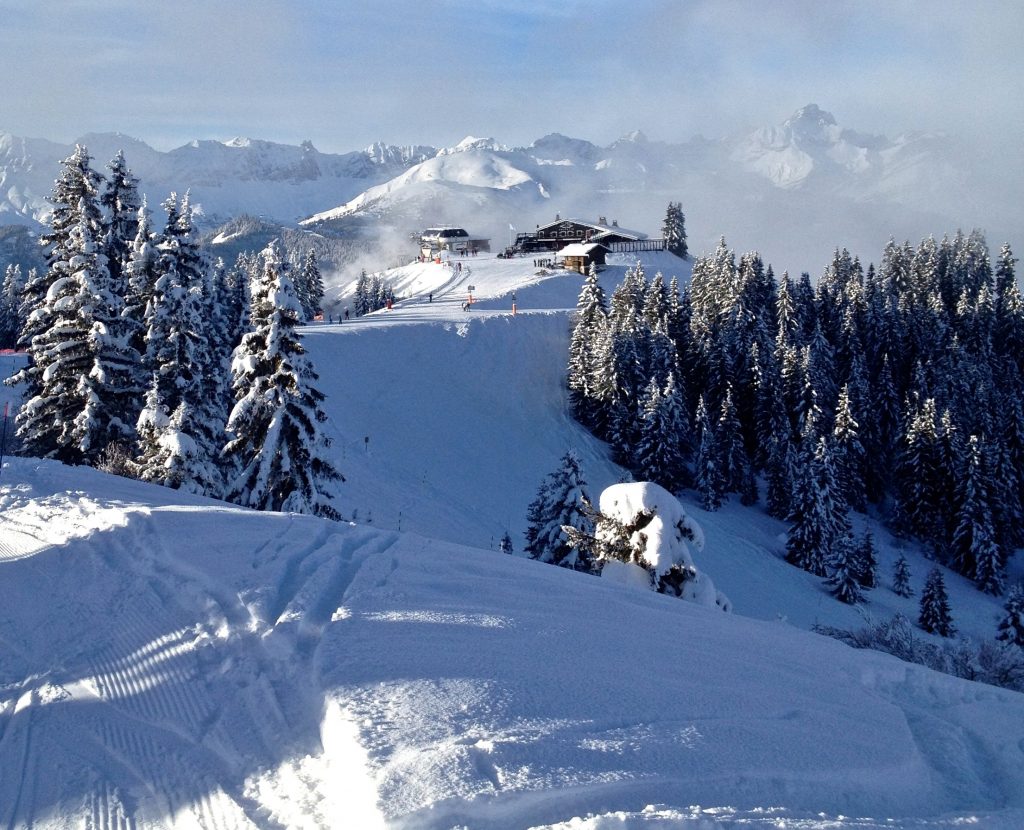
Megève’s ski area can be daunting, and just starting can be a challenge. Definitely check out snow and weather conditions on the town’s website before heading out. Don’t try to get everywhere in one day. You’ll end up missing the scenery! The three main mountains are Rochebrune, Mont D’Arbois, and Jaillet, with Megève in the valley between. Then there’s the Cote 2000 and Mont Joly, farther out and offering higher-up, more challenging skiing. On the other side of Mont D’Arbois is the town of Saint Gervais les Bains, with its regional train station and thermal baths. Chairlifts and cable cars link all these areas, save Jaillet. And there are plenty of restaurants along and atop the runs (more on this later).

To navigate the place, here are some tips and favorite spots. The Jaillet area doesn’t connect to the rest of the domain by lifts, and directly faces the sun most of the day so usually has less snow. Given so many other possibilities, it’s usually safe to skip this mountain. Rochebrune’s gondola lift, France’s first, is readily accessible from its side of town, and offers wide and flatter runs, ideal for beginners or people just getting their ski legs back. From the top of Rochebrune, head to l’Alpette for moguls. From here it’s fun to ski down and chairlift up in a diagonal manner making your way to Cote 2000. Its summit is one of the highest in Megève, coming in at 6,600 feet (2,014 meters). It offers long and technical runs, has a certified Descent, and due to shade most of the day, retains snow cover well into April.

On the other side of Rochebrune/Cote 2000 is Mont D’Arbois/Mont Joly. While Mont D’Arbois is usually crowded, the best course of action is to ski over to Mont Joly, the highest point of Megève at nearly 8,300 feet (2,525 meters). Megève regulars know it as the most entertaining of areas. It also offers the most stunning views of Mont Blanc, the Alps’ highest mountain. Though the whole of the place is famous for its views of the mount. Skiing to Saint Nicolas, a vertical kilometer below Mont Joly, always makes for a breathtaking experience. And if the lifts happened to have closed in the process (speaking from experience), there’s a free bus to Saint Gervais. No matter where you end up, however, you’ll always have brilliant panoramas and quiet forest runs to enjoy, and hot chocolate is never far off.

What’s for lunch, you ask. No fear, at the top of every mountain, and more often than not halfway down a run and at the bottom, too, you’ll find a charming chalet restaurant serving up hearty mountain favorites such as tartiflette (a must-have while you’re here). For the more gourmet-oriented (and willing to spend), Idéal 1850 (top of Mont D’Arbois) and L’Auberge de la Cote 2000 (bottom of Cote 2000) are not to be missed. In true savoyard fashion, however, packing some saucisson, etc., is the way to go.
L’après-ski, a Sport of its Own
Megève wouldn’t be what it is today if not for the famed sport of l’après-ski, literally “after ski.” Safe to say Megève excels in this art form. What it lacks in rad runs and high altitude adventure found in places like L’Alpe d’Huez or Chamonix it makes up for in village vibe. Restaurants, bars, shops, art galleries fill the town. There are indoor and outdoor ice-skating rinks and an indoor pool. And two movie theaters. But what ties everything together is the ever-cheerful and warmth-filling mountain ambiance vibrating through town, right across the cobblestone pedestrian center and along the timber walls of chalets, without forgetting the outdoor outfitters and ski shops every which way.
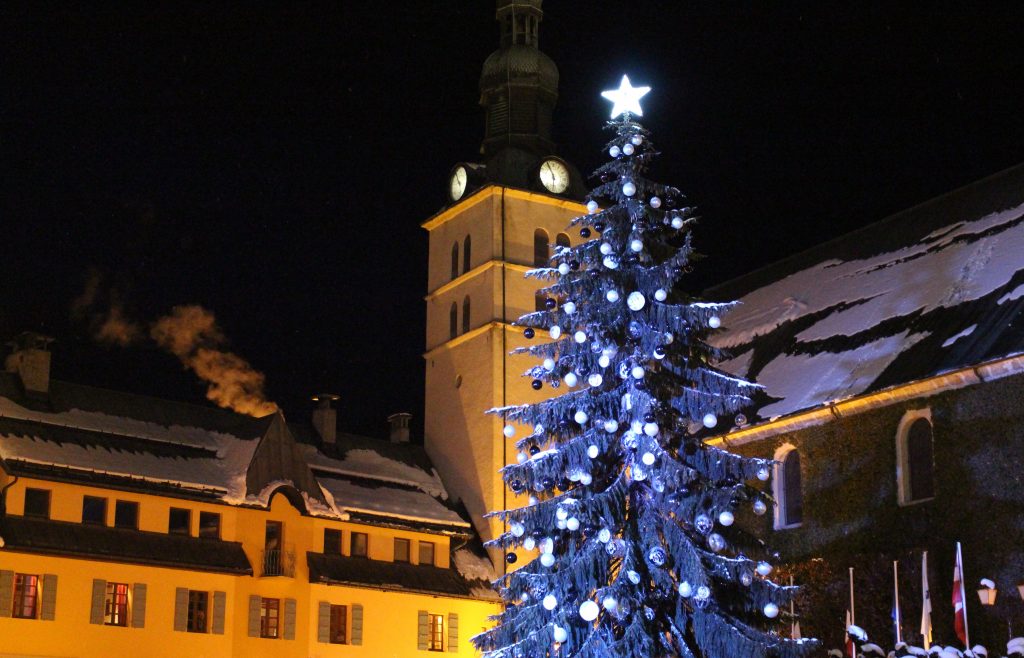
The place screams winter chic. Since the Rothschild days, it has been frequented by the rich and famous, and services catering to them have followed. For example, Megève’s most famous clothier is Allard. More than a store, it’s a Megève institution, founded in 1926 and sharing the town square with the Church and town hall. It’s here that modern ski attire, designed for comfort and style in one, was born.
Unlike places like Val Thorens — Europe’s highest ski resort — Megève wasn’t built as a resort, but existed as a peaceful mountain village before its winter getaway potential was discovered in the ’20s. Thus, it continues to cherish its still present, but slowly fading, historical side. In the center of town down a side street is a 19th-century farmhouse museum, exhibiting items and photographs from times in the mountains long past, with a touch of nostalgia. It’s worth a short visit to get a feel for life here before the tourism boom that changed Megève forever.
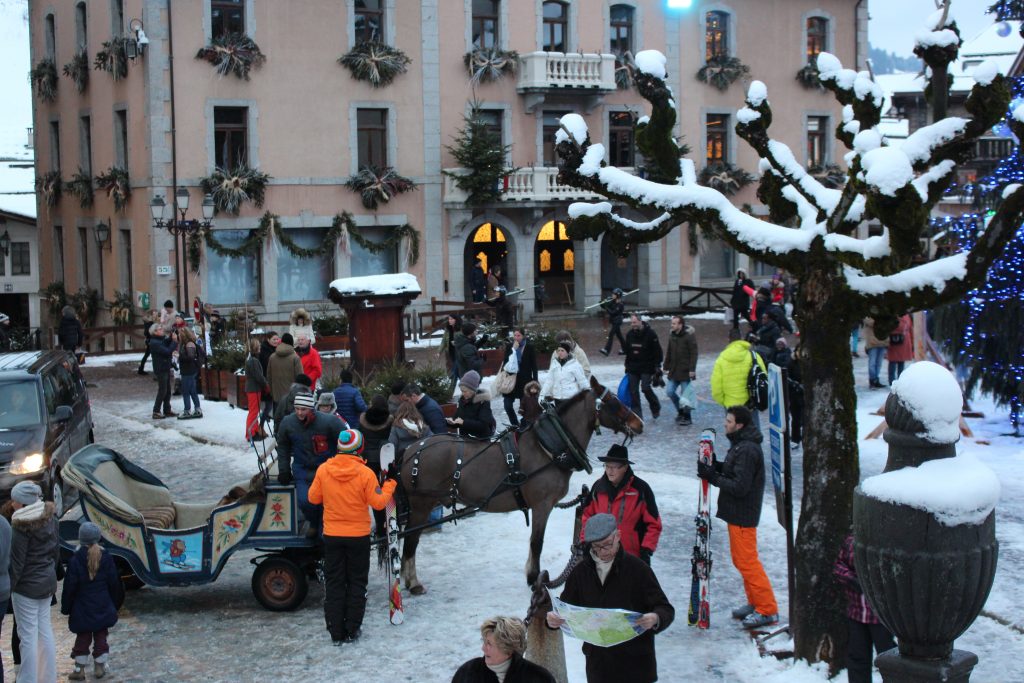
All around Megève, you can still see grand old farmhouses and even a 16th-century chapel. The downtown’s architecture is lovely. And reminiscing about the first days of alpine tourism comes easy through vintage posters and black and white photographs hanging around many restaurants. Embrace it even more on a horse-drawn carriage ride around town. A historical highlight is the Calvaire. It’s a short winding trail from the center to the base of Mont D’Arbois lined with chapels and churches, built in the mid-1800s.

Where to Eat & Stay in Megève
There are many great hotels and restaurants to choose from. So a good night’s sleep and tasty meal are always within reach. Here are a couple of suggestions for all tastes and budgets. Wishing to save to spend another day, you won’t go wrong with L’Alp Hôtel, a charming and central family-run two-star with breakfast included, ski lockers, and a quiet dining area. You can book dinner with your room, too. But if you’re not staying at the hotel, book ahead, as there is a set menu, simple but tasteful, that changes every night. Another more budget-oriented option is Le Gai Soleil, built in 1927 and one of two original Megève hotels.
Mid-range, stay at Hotel au Coeur de Megève, right in the center of town, and also a Megève classic. On the eating end, there are dozens of restaurants. But for an authentic savoyard experience, the Refuge du Calvaire, along the Calvaire trail, is a must. Order raclette, and a half wheel of cheese on a rack is on the way. Have your wine chilled in a bucket of snow from the front porch. Another favorite is La Table du Trappeur, in the Hotel Saint George. But after a long day of skiing, what you may want is simply some tasty crêpes and hot cider. Chez Maria and La Petite Crêperie are two of the best places to get them.
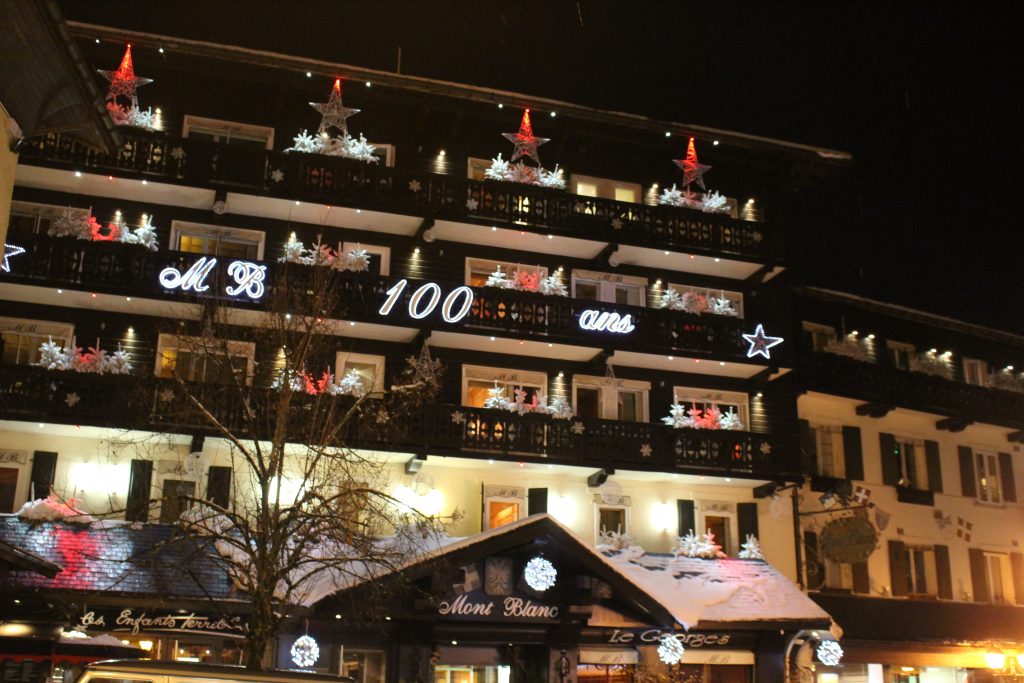
High-End Accommodation in Megève
On the splurge end of things, Megève delivers. There are several five-stars. Most notable are Les Fermes de Marie, Fer à Cheval, Les Flocons de Sel, Alpaga, and Chalet du Mont D’Arbois. Even The Four Seasons has a foothold. But if history and old-school chic is your thing, stay at the legendary Hôtel Mont Blanc, just off the town square. Playing host to anybody who’s anybody, the establishment ranks in that unofficial category to which belong the Cristallo in Cortina, the Palace in Gstaad, or the Schwarzer Adler in Saint Anton. Transitioning to fine dining, you need not go far if staying at the Mont Blanc. Downstairs is Les Enfants Terribles, decorated with frescoes by Jean Cocteau. And Megève is home to three Michelin-starred restaurants, most notably Les Flocons de Sel (3*).
Around Megève
Megève is a perfect base for exploring the surrounding region. Here are a couple suggestions of things to see and do just a short way away. Only 45 minutes from Megève is Chamonix, right at the base of Mont Blanc and Europe’s prime destination for mountain sports. The first Winter Olympics took place here in 1924. A highlight is the Aiguille du Midi, the starting point for the 20-kilometer-long Vallée Blanche run. A second prime skiing spot in Chamonix is the Grands Montets area, taking skiers up to over 10,700 feet. The town center is always vibrant and charming, too.
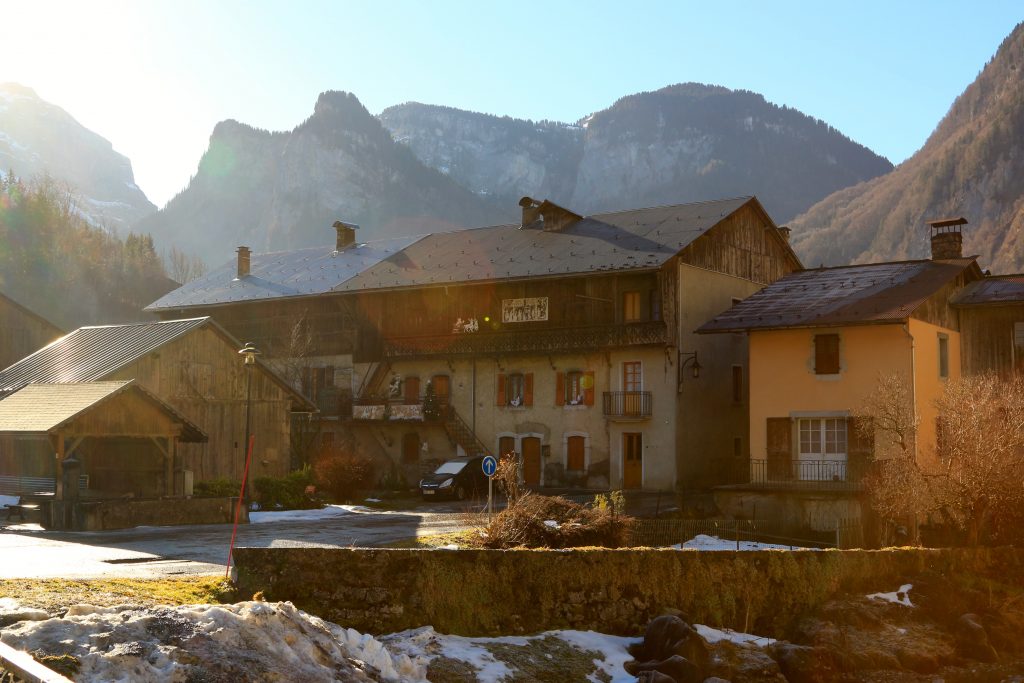
Other worthy ski resorts, or stations as they’re known, include Flaine, Avoriaz, Samoëns, Morzine, and Courmayeur on the Italian side of Mont Blanc, all suitable for day trips. If you need a break from skiing, Geneva and towns along Lake Geneva (Lac Léman), such as Ivoire, are only an hour away. Lyon, France’s second-largest city, is two hours away. Torino in Italy is two, as well, and Milano four. But simply taking a drive in the surrounding mountains, like going up and over the famed Saint Bernard pass, is quite enjoyable. Annecy, with its canals, lake, and castles, is about an hour away and well worth spending a day, too.
What You Need to Know: Costs & Getting There
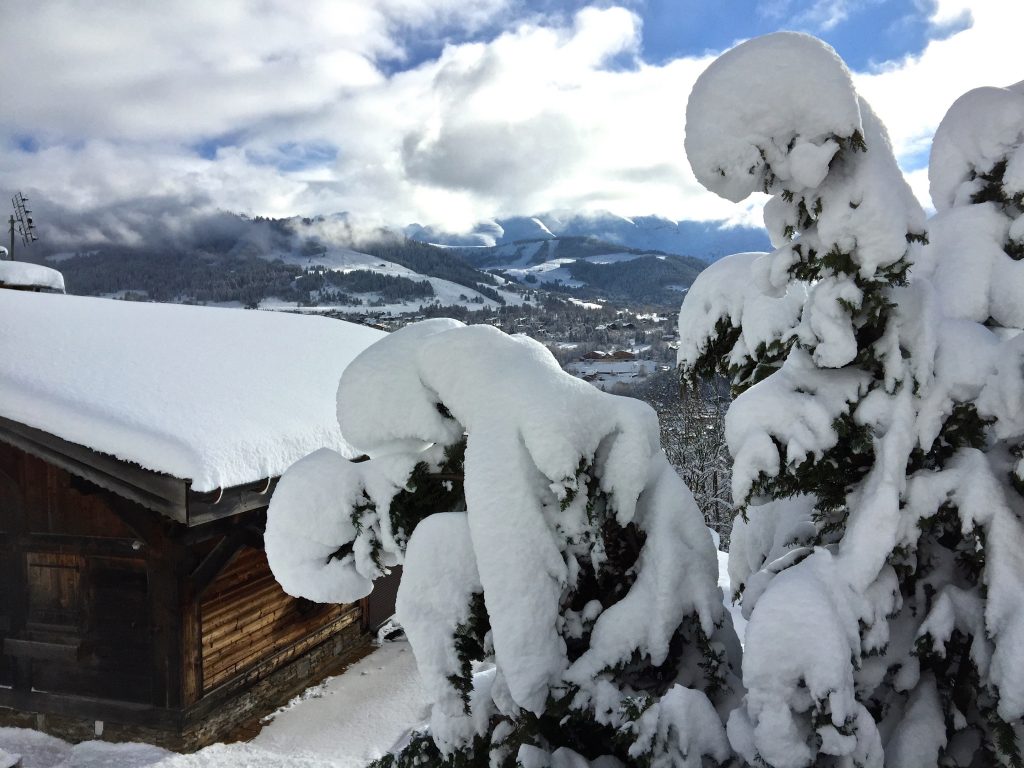
Skiing (and staying) in Megève is more on the pricier side of things. A day pass will cost about €45, and average daily ski rental comes in at €35 (with poles and boots). Megève is relatively accessible. The closest international airport is in Geneva (GVA), only an hour’s drive away, with flights to all over Europe, plus the Middle East, Beijing, JFK, Washington D.C., and Montreal. Lyon’s airport (LYS) is slightly farther, with fewer flight options. With no train station, riding the rails to Megève can be difficult. the closest regional train station (with trains to Lyon) is in Sallanches, from which buses regularly depart. There are also many bus options, though mostly only during high season, from Geneva, Lyon, and nearby towns. Driving in is definitely the easiest. But if you want to arrive by helicopter or small plane, that’s also possible. Megève actually has an airstrip, usable year-round. Several companies charter out helicopter rides from Geneva, and even from Nice’s airport. Of course, skiing in from a neighboring village is the way to go.



